
Any people who travel to the vast reaches of the Australian outback also enjoy learning about the men who opened up these regions: explorers such as John McDouall Stuart (1815-1866) and Augustus Gregory (1819-1905).
This feature was originally published in 4x4 Australia’s October 2012 issue
These men were contemporaries who made incredible journeys. They were brave and resourceful, well qualified, great leaders, outstanding at finding water, managing limited resources and at the forefront of exploration technology at the time.
The contrast between the two men, however, was marked. Stuart is known by almost all travellers for the highway if not his deeds, whereas Gregory is known by few. The other great contrast is their health, status, success and indeed longevity when their ‘ramblin’ days were done’ … but we are getting ahead of ourselves.
John McDouall Stuart (1815–1866)
In the 2723km between Port Augusta to Darwin is one of Australia’s best known and important roads, a railway and once an Overland Telegraph Line. There are also cattle, tourism, mining and other industries and their attendant populations. This all happened due to the efforts of a thin, taciturn, sickly, heavy-drinking, heroic Scotsman, John McDouall Stuart, between 1858 and 1862.

Stuart was born in Dysart, in Fife, and after being orphaned as a teenager, he graduated as a Civil Engineer from the Scottish Naval and Military Academy. In 1838, he arrived in Adelaide aboard the Indus in the company of James Sinclair, who would become a pastoralist. (Interestingly, Stuart would return to the UK a broken man onboard a different ship but one also called the Indus.)
He was said to be a man of small stature at 5ft 6in (168cm) and slight; at nine stone (54kg) he certainly was ‘jockey’ weight.
From 1839 to 1842 he worked as a surveyor in Adelaide. He then farmed for two years with his friend Sinclair, at Nairne, and later joined Charles Sturt’s northern expedition as a draftsman. This was a harsh and dangerous 18-month journey, as the men searched for the fabled inland sea, that foundered on a sea of a different sort, that of gibbers, in Sturt’s stony desert.
Despite ludicrously carrying a boat, the party achieved a success of sorts as they travelled closer to central Australia than anyone had before. The privations were terrible. In furnace-like heat they had to wait for rain at one place for weeks.
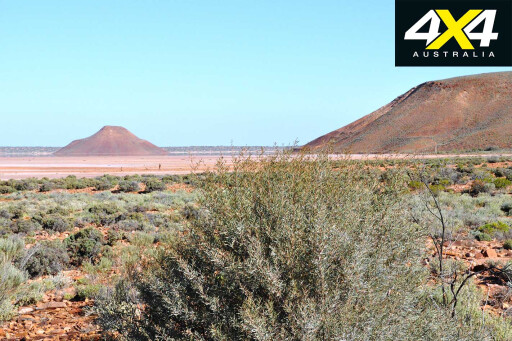 Stuart suffered from scurvy – he was laid up for 12 months on his return to Adelaide. (Scurvy is a terrible condition. It can cause gum disease, bad breath, bleeding from the gut, swollen limbs with hard, blackened skin, easy bruising, poor wound healing, nerve pain, blindness and obvious debility.)
Stuart suffered from scurvy – he was laid up for 12 months on his return to Adelaide. (Scurvy is a terrible condition. It can cause gum disease, bad breath, bleeding from the gut, swollen limbs with hard, blackened skin, easy bruising, poor wound healing, nerve pain, blindness and obvious debility.)
It is a puzzle how Glen McLaren, in his 1996 book Beyond Leichhardt, lauded Stuart’s provisioning against scurvy, which occurs due to vitamin C deficiency, as “a milestone of sophistication in the history of land exploration”. Yet Stuart then and later suffered horribly from this preventable disease. One can only wonder why.
After this journey he joined James Sinclair for a few years near Port Lincoln, South Australia, where Sinclair’s relatives still live and hold land today.
Outback exploration, however, was in his blood and in 1850 he spent some time with William Finke surveying and exploring the northern Flinders Ranges. During 1858 and 1862 his six famous sorties reached the northern coast, initially at Finke Bay and then Chambers Bay, east of Darwin. These locations were named after his two benefactors.
THE SIX NORTHERN JOURNEYS

The reasons for these northern odysseys were complex and mixed. There was the desire for pastoral country and minerals and the wish to reach the Victoria River so that a navigable route to the inland could enable settlement in the way that had happened along the great rivers of the world. Unfortunately, the river was unnavigable to this extent and the land unsuitable.
Stuart’s trips were funded by James Chambers and later the SA government. There was huge political and economic interest in a telegraph line reaching Australia from Europe but there was no knowledge of how it was to reach the south or where it was to come ashore.
It is hard to imagine just how important the telegraph would have been for business and the economy, with communication achievable in minutes rather than the six weeks for letters. South Australia and Victoria were fierce rivals for this potential boom.
For the first person to establish a route to the north coast, South Australia proposed a reward of £2000 but Victoria provided £10,000 for Burke and Wills, a reflection of the colony’s massive gold-derived wealth. This farcical expedition ultimately cost £30,000 when the search costs were added.
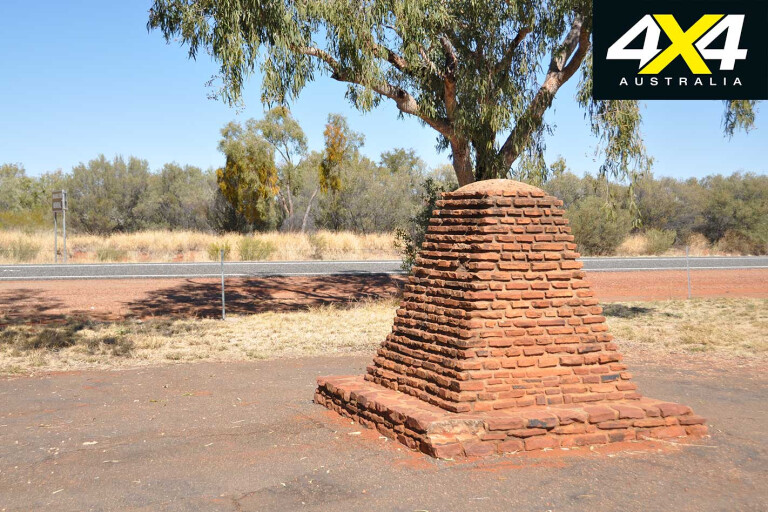
Stuart’s first three trips essentially found a way through the western part of Lake Eyre’s horseshoe of salt lakes that was thought to bar the way to the north and established a route to the Oodnadatta area.
The fourth was curtailed at Attack Creek, north of Tennant Creek, for obvious reasons (although a clue is in the creek’s name), the fifth at Newcastle Waters by the Murranji scrub preventing access to the Victoria River and in the sixth he reached the coast in July 1862.
He was already sick but the return journey to Adelaide was the stuff of nightmares. Ably led by Frank Thring, who was just 20 years old, the party managed to reach the outer settlements of South Australia and safety. Near death, Stuart had to be carried for the last 650km – an extraordinary feat. They eventually reached Adelaide in January 1863 to a huge celebration.
Stuart was awarded the Royal Geographical Society’s Patron’s Medal, a recognition he had proved worthy of as he had reached the geographical centre of Australia. He named this area Mt Sturt, which was later adjusted to Mt Stuart.
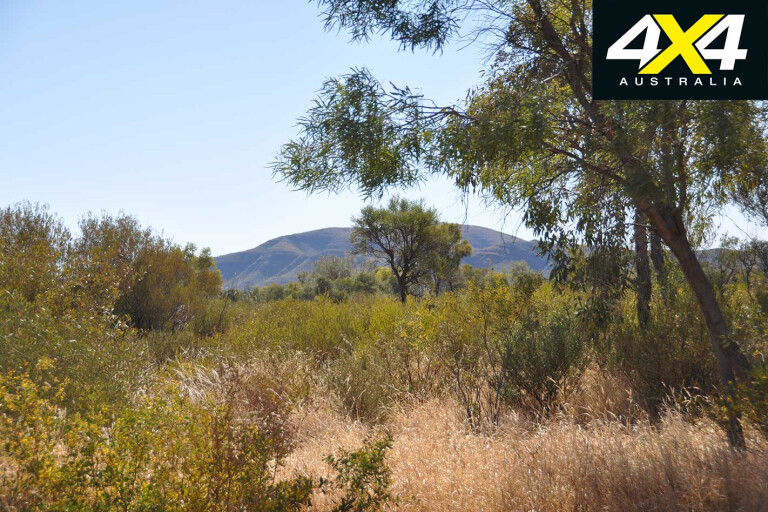
From March 1860 to January 1863 Stuart spent 30 out of 34 months in the saddle, most of this in some of the most inhospitable land on earth. He rode 20,000km and never lost a man. The only time he had access to maps was in the area of the Roper River where his, Leichhardt’s and Gregory’s paths crossed.
This last trip ultimately killed him. His mentor, James Chambers, died shortly before his return which must have shattered him as Chambers was the only person who seemed to care for Stuart. Neither Chambers nor Finke, who both attained considerable wealth helped by Stuart’s endeavours left him anything in their wills.
Sadly, Stuart reaped little in monetary reward and the South Australian government granted him a relative pittance – £162 a year. Disillusioned, he returned to England to live with his sister where he died in 1866, blind, crippled and demented after his years of torture.
He was buried in West London’s Kensal Green Cemetery where seven people attended his funeral: four relatives, a visiting South Australian pastoralist and two members of the Royal Geographical Society.
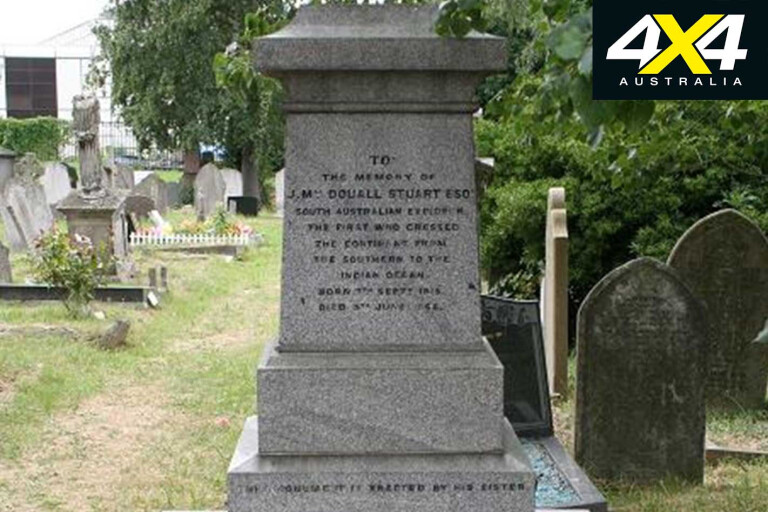
STUART'S HEALTH
During virtually every one of his journey John McDouall Stuart was incapacitated by pain, scurvy, night blindness, and more. A list of his ailments includes scurvy, Beriberi, vitamin A deficiency, gastric and/or duodenal ulcers that bled, alcoholism, a suspected addiction to laudanum (10 percent of which is opium), depression and probably other psychiatric illnesses, anaemia from his ulcers and malnutrition, dementia and quite possibly some other illnesses.
How could someone so frail and sick achieve what he did, mostly while enduring a diet of dried meat and flour? The Royal Geographical Society in London awarded Stuart its Patron’s Medal in recognition of his efforts in reaching the geographical centre of Australia.
This award, together with the watch he was given for his first trip, made Stuart one of only two people – the other was Dr David Livingstone – to gain two of the Society’s rewards. (Augustus Gregory received the Gold Medal.)
Augustus Charles Gregory (1819–1905)

He was born in Nottingham, England, and educated privately. In 1829 his parents moved to Western Australia. He and his brothers (Henry, Charles and Francis) were well educated and employed in surveying-type jobs by the government of the day.
They were mentored by the Western Australian Surveyor-General, John Septimus Roe, to whom McLaren attributes the “creation of a school of exploration perhaps unrivalled in Australian exploration”. They explored to the north and east of Perth.
After 13 years as an assistant surveyor in Western Australia, in 1854, Gregory was appointed to lead the North Australian Expedition. This was the last expedition in Australia funded by the Royal Geographical Society and he took advice from Captain Charles Sturt.
The expedition’s aim was to explore the hinterland of the Victoria River and to report on the pastoral suitability. The party consisted of 18 men, 50 horses and 200 sheep and left from Brisbane.
They arrived at the Victoria River in two ships, the Monarch and the Tom Tough, the former being of little use as it could not manage the river; it ran aground in the Brisbane River at the beginning of the voyage and was despatched to Singapore.
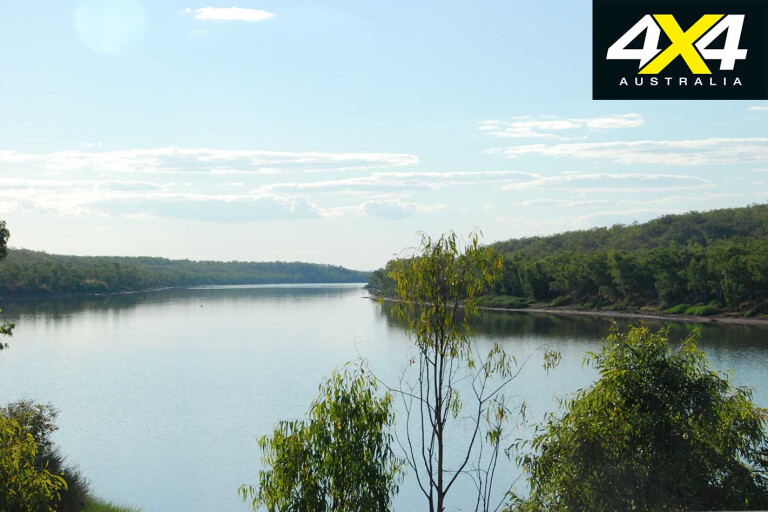
After losing horses and suffering a 28-day delay with a stricken Tom Tough they finally reached Timber Creek in late 1855 and built quite a little settlement reputed to resemble an English farmyard. This is well worth a visit today.
For the next six months they explored the area, including travelling along Sturt’s Creek to the desert, after which Gregory described it as favourable land.
In mid-June 1856 they sent the Tom Tough to meet them at the mouth of the Albert River, in the Gulf of Carpentaria. They arrived two months later, only to find that the ship was not there. Undeterred they rode to Brisbane. This was before Burke and Wills. Gregory did not lose a man or horse. He had covered 3219km by sea and 8047km by land in 16 months.
The party’s reports of the Victoria River’s potential sowed the seeds of settlement in the minds of their sponsors and others.
Later, Gregory searched for the missing Ludwig Leichhardt from the middle of Queensland towards Cooper Creek and then Adelaide, before returning to Brisbane and retiring from exploration. (A metal plate, identified as Leichhardt’s, was found along Sturt’s Creek in 2000 so it seems he made it two-thirds of the way from Brisbane to Perth.)
BEGINNINGS AND ENDS
Stuart was orphaned at 14 and educated in an army institution, whereas Gregory was privately educated in the bosom of a family. How gentle this was is conjectural but he was likely to have had a kinder life than Stuart and perhaps the thousands of shared kilometres he travelled with his brothers confirm these strong family ties.
They both received support in their trips but there it ended. Stuart left for England with £162 annual income and nothing else. He died in poverty, crippled, partially, if not totally, blind and suffering with dementia. Gregory became Surveyor General of Queensland, a member of the Legislative Council and later a Knight.
It is easy to imagine Stuart as permanently semi-malnourished as a result of the colossal impact of the depredations of his journeys and the effects of excessive alcohol consumption hammering away at his frail body.
It is also easy to imagine how he was used by others and his efforts never really recognised. Perhaps even more depressing was the fact none of the 30 men whom he led did anything to help him in his later life. That is a sad epitaph for a man who achieved so much.
Last but not least, while no stranger to dry country, Gregory’s major journeys were through well-watered lands; Stuart’s challenges were often tackled in the red-hot heart of the country.

COMMENTS